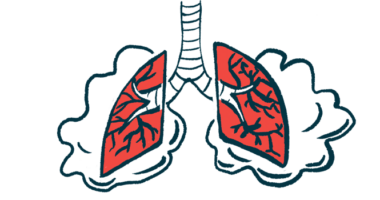Kaftrio leads to improved body composition in CF patients: Study
Significant BMI increases in all patients but fat mass gains seen only in women

Six months of treatment with Kaftrio (elexacaftor/tezacaftor/ivacaftor), sold as Trikafta in the U.S., leads to increases in body mass index (BMI) and fat mass in people with cystic fibrosis (CF), a small study has found.
However, while BMI increased for both men and women, only women showed a significant increase in fat mass.
“Weight and BMI provide relatively little information about the nutritional status, and, therefore, body composition should be a part of the assessment for patients with CF,” researchers wrote. Body composition refers to the percentage of fat, bone, and muscle in a person.
The study, “A prospective study to assess the impact of a novel CFTR therapy combination on body composition in patients with cystic fibrosis with F508del mutation,” was published in the journal Clinical Nutrition.
Being underweight common in people with CF
Besides causing lung symptoms, CF often brings about problems with digestion. As a result, many people with CF may be underweight and have a compromised nutritional status.
The CFTR modulator Kaftrio, sold by Vertex Pharmaceuticals, is approved in Europe for patients 6 and older who have at least one copy of F508del — the most common CF-causing mutation. It is given with ivacaftor, which can be used independently as Kalydeco.
Among other benefits, Kaftrio also promotes weight gain, particularly among people with CF who are underweight before they begin treatment.
While researchers often look at changes in BMI, a measure that relates body weight to height, it has been suggested that body composition may be better for monitoring weight gain in people with CF.
To better understand the effect of Kaftrio on body composition, a team of researchers in Spain used a method called bioelectrical impedance analysis to measure body fat and muscle mass.
The study included 36 people with CF, who were a median age of 30.4 years. Most (61.1%) were men. Sixteen (44.4%) carried two copies of the F508del mutation; the remaining 20 (55.6%) had only copy of the mutation.
All were on enzyme replacement therapy to supply enzymes that are released into the small intestine, where they can help digest food into nutrients the body can use.
BMI and bioelectrical impedance analyses were performed before starting Kaftrio treatment, and after six months. There was a significant increase in BMI, from 22 to 23.2 kilograms per square meter, along with a median increase of 1.1 kg (about 2.4 pounds) in fat mass.
Women on Kaftrio experienced significant increase in fat mass
While BMI increased in women (from 21.9 to 22) and men (from 22.8 to 23.2), only women showed a significant increase in fat mass, from 15.1 kg (33.3 pounds) to 16.1 kg (35.5 pounds).
Further analyses revealed “as BMI increases, the percentage of fat mass also increases, whereas that of muscle mass [tends] to decrease,” the researchers wrote.
Forced expiratory volume in 1 second, a measure of the amount of air that can be forcefully exhaled in one second, improved from 72.7% to 84.7%, indicating better lung function six months into treatment with Kaftrio.
“Multidisciplinary treatment is key in the management of CF, and strategic approaches including dietetic advice and exercise prescription should be implemented for further improvements in body composition and nutritional status,” the researchers concluded.









